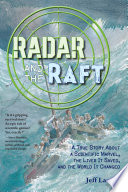2018 School Spending Survey Report

 Lantos, Jeff
Lantos, Jeff
Radar and the Raft: A True Story About a Scientific Marvel, the Lives It Saved, and the World It Changed
We are currently offering this content for free. Sign up now to activate your personal profile, where you can save articles for future viewing.




